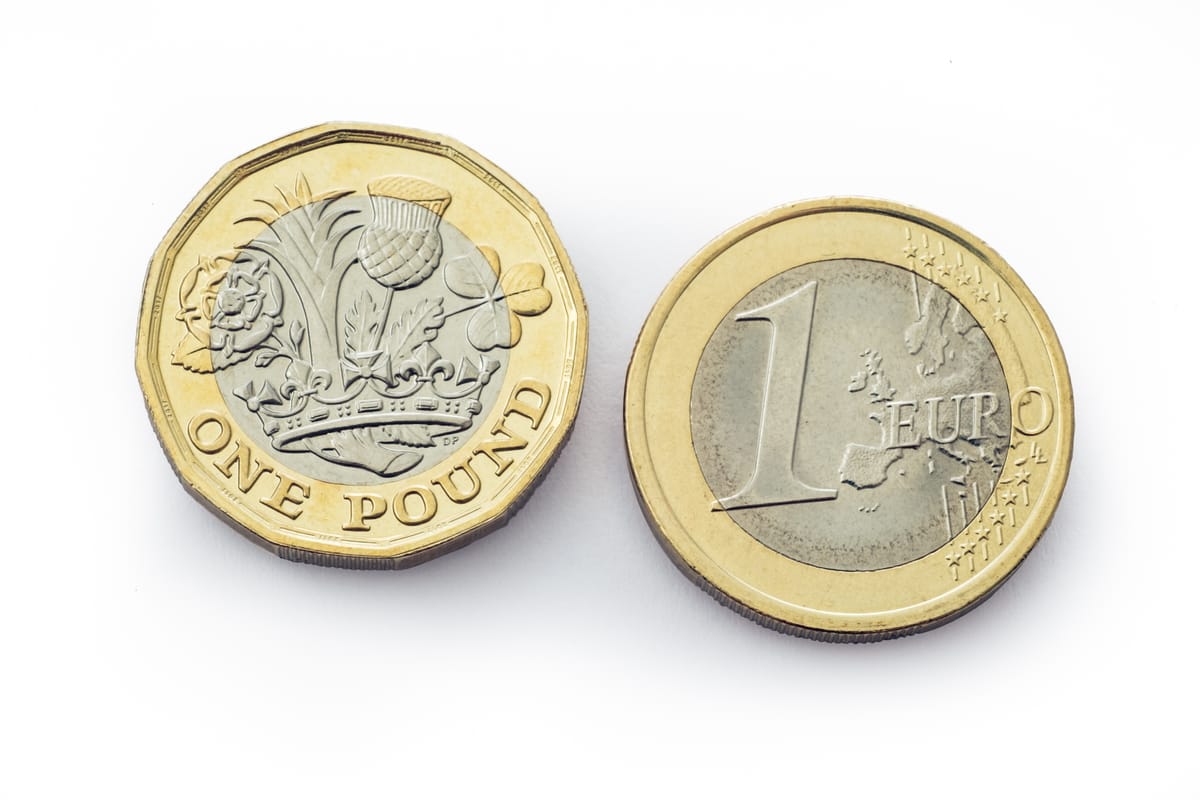GBP/EUR exchange rate November review: pound hits highest level since April 2022 versus euro
The pound euro (GBP/EUR) exchange rate touched a multi-year high in November after Donald Trump's decisive election victory undermined the euro.

1 November
The pound euro (GBPEUR) exchange rate began the month trading on the back foot following a lacklustre UK PMI print that caused it to fall more than 0.5% below the €1.19 benchmark.
October’s finalised manufacturing PMI declined from 51.5 to 49.9, entering the contraction zone (a reading below 50) and behind market expectations for a reading of 50.3.
6 November
The pound rose sharply after it was confirmed Donald Trump would return to the White House as America’s 47th president, taking it above €1.20. Meanwhile, the euro was pressured by trade concerns in the wake of Trump’s decisive victory
7 November
Bank of England (BoE) rate-setters voted unanimously to lower interest rates by 25 basis points to 4.75%. The expected move had already been priced into markets, bringing the accompanying commentary into sharp focus for investors. This signalled a cautious approach to cutting interest rates that saw bets on a follow-up reduction on 18 December scaled back, lifting the pound to €1.203 – a nine-day high.
The pound’s gains were capped by an increase in Eurozone retail sales in September that bolstered the single currency.
11 November
The pound euro rate hit its highest level since April 2022, a fraction above the €1.21 benchmark, after ‘Trump trade’ dented the single currency. The Republican Party's sweep of both houses of Congress provided him with the power to action his proposed policies when he takes office. Notably, his plan to raise import tariffs, which stoked concerns about the Eurozone economy given its significant goods export base.
12 November
The pair couldn’t hang on to its multi-year high following the release of downbeat UK labour market data, falling a whisker below €1.20
The rate of unemployment rose to 4.3% in the third quarter from 4%, but questions about how the Office for National Statistics (ONS) gathers the data cushioned the pound’s fall. Moreover, wage growth slowed in the three months to September to its lowest rate in more than two years and the number of vacancies declined again.
Contact a currency specialist to discover how they can help you take control of exchange rates.
15 November
The pound was undermined by data showing the UK economy stalled in the three months to September and contracted at the end of the quarter.
GDP expanded by just 0.1% amid service sector woes, missing forecasts for a 0.2% rise and well short of the 0.5% expansion posted in the second quarter.
19 November
The pound slipped to a 13-day low of around €1.194 amid escalating tensions in Eastern Europe after the Kremlin warned of a nuclear response to Ukraine using US weapons to target Russian territory.
20 November
The pound recovered to a five-day high above €1.20 after the CPI for October reported that UK inflation rose to 2.3% from 1.7% in September, just above forecasts of 2.2%. The sharp rise prompted investors to further reduce bets that BoE will cut borrowing costs in December, supporting the pound.
25 November
The pound sunk towards the €1.19 mid-range after the euro was supported by Donald Trump’s nomination for Treasury Secretary, Scott Bessent. This alleviated concerns about proposed US trade tariffs damaging the Eurozone economy. The safe haven dollar subsequently declined in value, helping the euro to firm due to its negative trading correlation with the US currency.
29 November
The pound drifted higher versus the euro as November drew to a close.
An acceleration in Eurozone inflation didn’t hinder its progress, as it isn’t expected to stop central bank policymakers from cutting interest rates in December. Inflation in the bloc rose to 2.3% year-on-year in November, up from 2% in October.
The pound euro rate ended the month at around €1.203.
Looking ahead
The next BoE Monetary Policy Committee (MPC) meeting is on 19 December. The central bank is expected to hold interest rates after inflation rose above its 2% target.
The next ECB policy meeting is on 12 December. An interest rate cut is still likely despite rising prices across the bloc. Investors expect the central bank will lower borrowing costs by a quarter-point to 3%.
